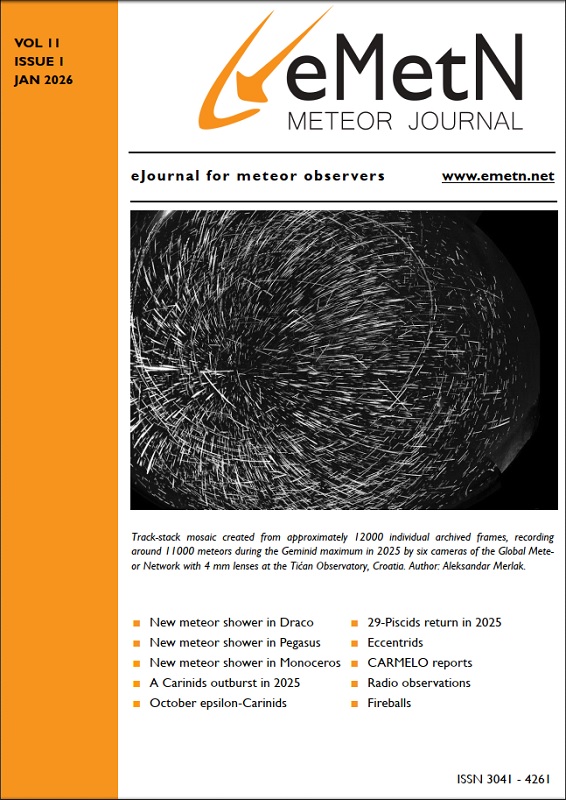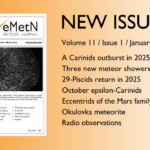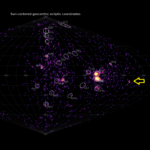Mariasole Maglione (GAV, Gruppo Astrofili Vicentini)
Lorenzo Barbieri (CARMELO network and AAB, Associazione Astrofili Bolognesi)
Introduction
In June, the CARMELO network recorded increasing meteoric activity, and in the first half of the month detected activity consistent with the daytime shower of the Arietids (171 ARI).
Methods
The CARMELO network consists of SDR radio receivers. In them, a microprocessor (Raspberry) performs three functions simultaneously:
- By driving a dongle, it tunes the frequency on which the transmitter transmits and tunes like a radio, samples the radio signal and through the FFT (Fast Fourier Transform) measures frequency and received power.
- By analyzing the received data for each packet, it detects meteoric echoes and discards false positives and interference.
- It compiles a file containing the event log and sends it to a server.
The data are all generated by the same standard, and are therefore homogeneous and comparable. A single receiver can be assembled with a few devices whose total current cost is about 210 euros.
To participate in the network read the instructions on this page.
June data
In the plots that follow, all available at this page, the abscissae represent time, which is expressed in UT (Universal Time) or in solar longitude (Solar Long), and the ordinates represent the hourly rate, calculated as the total number of events recorded by the network in an hour divided by the number of operating receivers.
In fig.1, the trend of signals detected by the receivers for the month of June.
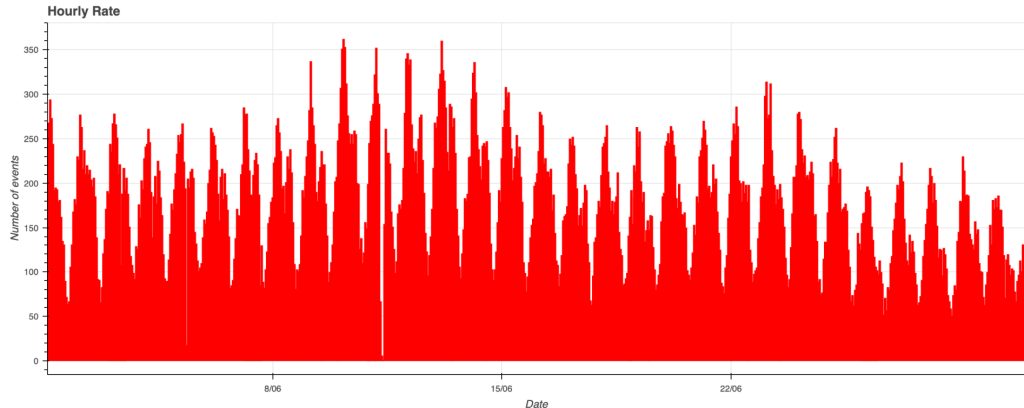
Fig. 1: June 2025 data trend.
Arietids
Arietids (171 ARI) are a meteor shower active from mid-May to mid-June. It is the most intense diurnal meteor shower (daytime shower) of the year: its maximum occurs when the Sun is already high in the sky, making visual observation extremely difficult, with less than one meteor visible per hour. However, Arietids are well detectable with radio instrumentation.
The radiant of the swarm is located in the constellation Aries, at a position about 4 degrees southeast of the star 41 Arietis. The meteors are generally rapid, with an entry velocity into the atmosphere of about 42 km/s, corresponding to an average velocity compared with other showers, which is not high (1).
In 2025, the Arietids shower showed increasing activity between June 3 and June 13, and the CARMELO network also detected an hourly rate consistent with a daily peak of the shower between 11:00 and 12:00 UT (fig. 2).
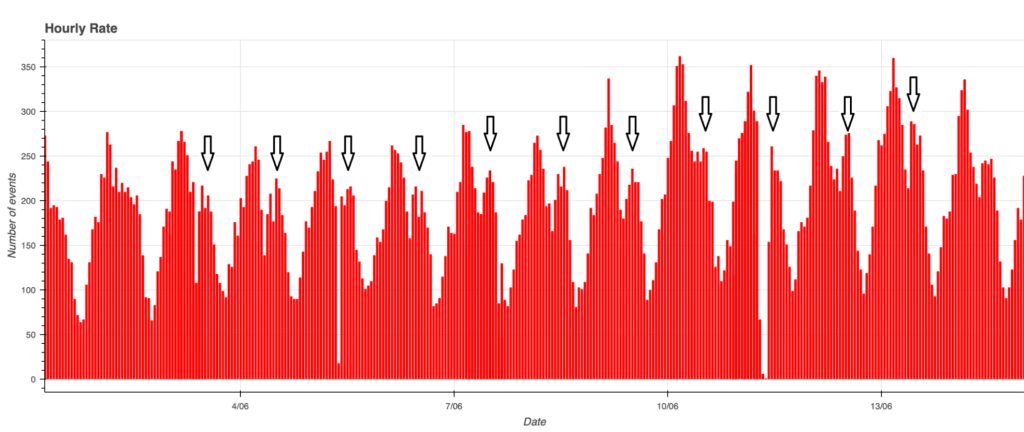
Fig. 2: Hourly rate between June 1 and June 15, 2025, with activity consistent with tracking of the Arietids shower.
Graves radar shutdown
From fig. 1, which shows the trend of the hourly rate of meteors detected by the CARMELO network, the interruption on June 11, between 7:00 UT and 10:00 UT, i.e., between solar longitudes 80.28° and 80.40° (see fig. 3), jumps out. It corresponds to a shutdown of the Graves radar in France, probably caused by station maintenance.
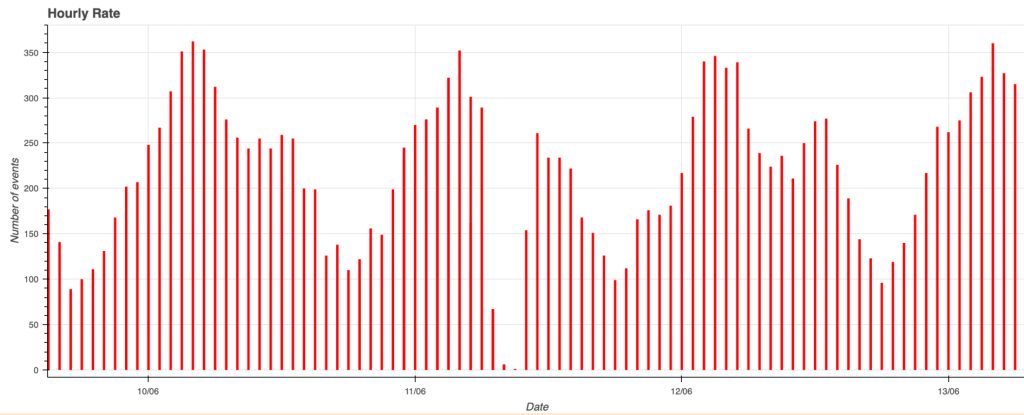
Fig. 3: In the center of the hourly rate chart is the June 11 interruption.
During the shutdown, which lasted about three hours, CARMELO network receivers recorded only 4 events, all of which were clearly identifiable as false positives. Under normal conditions, in the same time interval, the system records more than 1000 events on average. This comparison leads to an interesting consideration: if in the absence of the radar signal we receive only 4 spurious events, it means that, under standard conditions, about 99.6% of the recordings are actually meteors. A result that confirms the reliability of CARMELO’s automatic detection system.
The CARMELO network
The network currently consists of 14 receivers, 13 of which are operational, located in Italy, the UK, Croatia and the USA. The European receivers are tuned to the Graves radar station frequency in France, which is 143.050 MHz. Participating in the network are:
- Lorenzo Barbieri, Budrio (BO) ITA
- Associazione Astrofili Bolognesi, Bologna ITA
- Associazione Astrofili Bolognesi, Medelana (BO) ITA
- Paolo Fontana, Castenaso (BO) ITA
- Paolo Fontana, Belluno (BL) ITA
- Associazione Astrofili Pisani, Orciatico (PI) ITA
- Gruppo Astrofili Persicetani, San Giovanni in Persiceto (BO) ITA
- Roberto Nesci, Foligno (PG) ITA
- MarSEC, Marana di Crespadoro (VI) ITA
- Gruppo Astrofili Vicentini, Arcugnano (VI) ITA
- Associazione Ravennate Astrofili Theyta, Ravenna (RA) ITA
- Akademsko Astronomsko Društvo, Rijeka CRO
- Mike German a Hayfield, Derbyshire UK
- Mike Otte, Pearl City, Illinois USA
The authors’ hope is that the network can expand both quantitatively and geographically, thus allowing the production of better quality data.
References
(1) Robert Lunsford (2025): Meteor Activity Outlook for 14-20 June 2025, eMeteorNews

